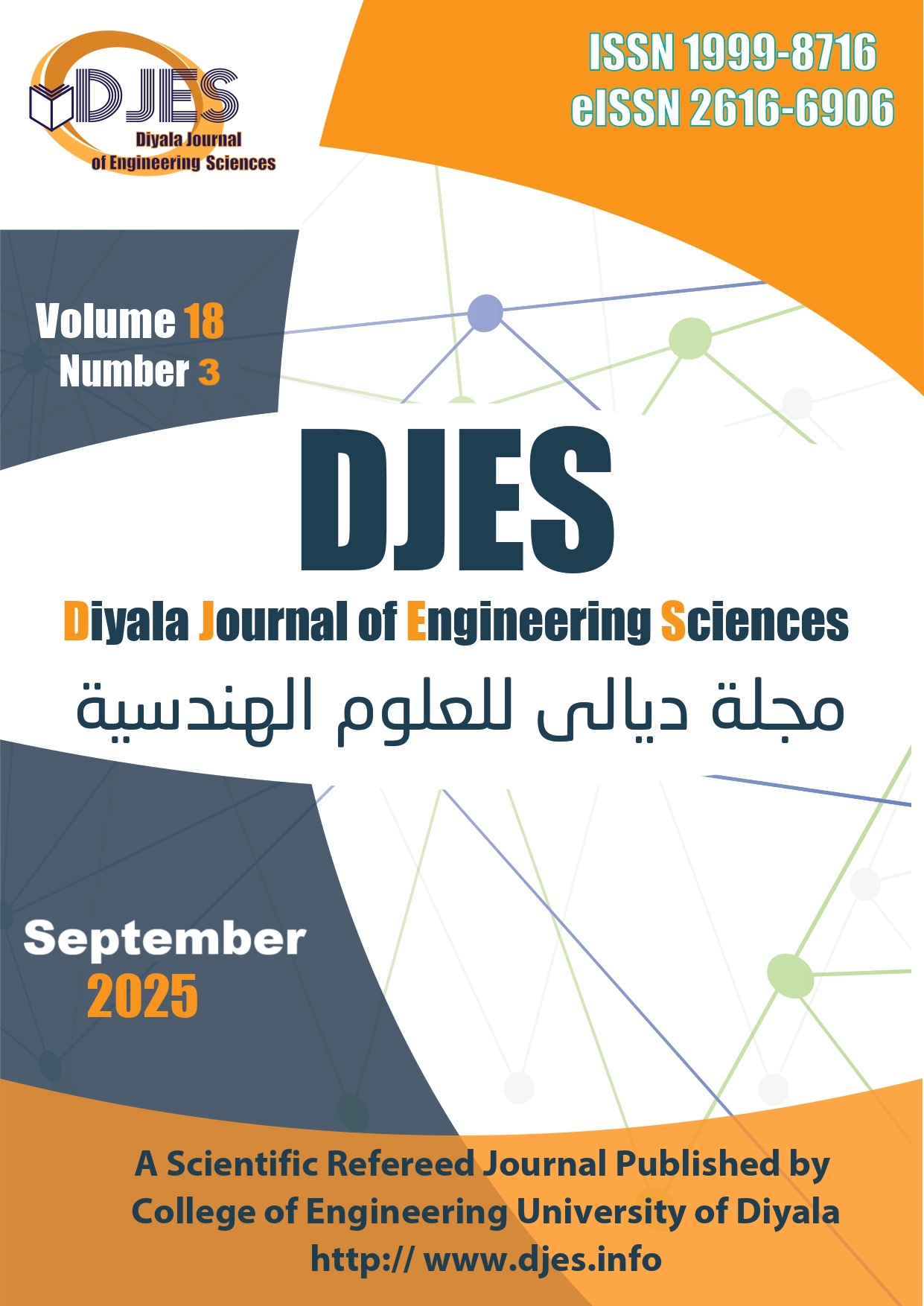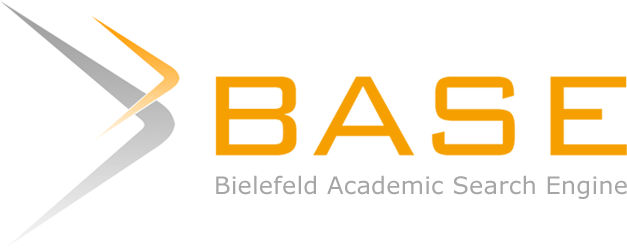Performance Prediction in Wire EDM Using Statistical and ML Techniques
DOI:
https://doi.org/10.24237/djes.2025.18304Keywords:
Wire EDM, Surface roughness, Taguchi method, Machine learningAbstract
Wire EDM plays a vital role in the precision machining of hard-to-cut materials, but its efficiency depends on the optimal selection of parameters. The influence of machining parameters on WEDM quality for Stainless Steel 202. This study integrates Taguchi’s L9 orthogonal design with machine learning (ML) to optimise and predict surface roughness (SR) outcomes. ANOVA revealed peak current as having a significant impact on machining quality, with a moderate non-significant effect from pulse on time; wire speed and pulse off time had minimal effect. Increased peak current and pulse on time result in higher discharge energy, which generates deeper craters on the workpiece surface, thereby leading to increased surface roughness. To boost predictive accuracy, three ML models—Random Forest (RF), Artificial Neural Network (ANN), and Support Vector Machine (SVM)— were evaluated by using k-fold cross-validation in addition to the conventional 80/20 train-test split. RF achieved the highest prediction accuracy (R² = 0.931), followed by ANN (R² = 0.918) and SVM (R² = 0.810). This approach minimises experimental efforts and enhances machining precision. The findings suggest that combining statistical tools with ML can streamline WEDM processes, improve surface quality, and reduce defects. Future work may focus on real-time control systems, hybrid optimisation, and deep learning models for further improvement
Downloads
References
[1] G. Rajyalakshmi, “Optimization of WEDM Process Using Taguchi Utility Analysis,” Indian J. Sci. Technol., vol. 11, no. 23, pp. 1–19, 2018, doi: 10.17485/ijst/2018/v11i23/114377.
[2] P. Shandilya and A. K. Rouniyar, “Multi-objective parametric optimization on machining of Inconel-825 using wire electrical discharge machining,” vol. 0, no. 0, pp. 1–13, 2020, doi: 10.1177/0954406220917706.
[3] A. Equbal and A. K. Sood, “Electrical Discharge Machining: An Overview on Various Areas of Research,” Manuf. Ind. Eng., vol. 13, no. 1–2, 2014, doi: 10.12776/mie.v13i1-2.339.
[4] A. Equbal, M. I. Equbal, and A. K. Sood, “An investigation on the feasibility of fused deposition modelling process in EDM electrode manufacturing,” CIRP J. Manuf. Sci. Technol., vol. 26, pp. 10–25, 2019, doi: 10.1016/j.cirpj.2019.07.001.
[5] P. Sharma, K. Kishore, V. Singh, and M. K. Sinha, “Surface Morphology Analysis of Inconel 625 through Multi-walled Carbon Nanotubes-Based Electric Discharge Machining,” J. Mater. Eng. Perform., no. Ref 9, 2024, doi: 10.1007/s11665-024-09849-x.
[6] B. Tejas Ajay, P. Mayur Vitthal, and G. Rajyalakshmi, “WEDM machining on Aerospace Materials for improving Material Properties,” Mater. Today Proc., vol. 4, no. 8, pp. 9107–9116, 2017, doi: 10.1016/j.matpr.2017.07.266.
[7] L. Slătineanu, O. Dodun, M. Coteaţă, G. Nagîţ, I. B. Băncescu, and A. Hriţuc, “Wire electrical discharge machining—a review,” Machines, vol. 8, no. 4, pp. 1–28, 2020, doi: 10.3390/machines8040069.
[8] A. Equbal, M. Israr Equbal, I. A. Badruddin, and A. Algahtani, “A critical insight into the use of FDM for production of EDM electrode,” Alexandria Eng. J., vol. 61, no. 5, pp. 4057–4066, 2022, doi: 10.1016/j.aej.2021.09.033.
[9] D. Dwaipayan, N. Titas, and B. Asish, “Parametric study for wire cut electrical discharge machining of sintered titanium,” Stroj. Cas., vol. 69, no. 1, pp. 17–38, 2019, doi: 10.2478/scjme-2019-0002.
[10] S. Seshaiah et al., “Optimization on Material Removal Rate and Surface Roughness of Stainless Steel 304 Wire Cut EDM by Response Surface Methodology,” Adv. Mater. Sci. Eng., vol. 2022, 2022, doi: 10.1155/2022/6022550.
[11] M. M. Shehata, S. El-hadad, and H. Attia, “Wire Electrical Discharge Machining Process : Challenges and Future Prospects,” Int. J. Technol. Innov., vol. vol.2, no. 2, pp. 31–37, 2022, doi: 10.21608/ijmti.2022.165776.1061.
[12] K. Jayakumar and T. Suresh, “Materials Today : Proceedings Effect of wire materials on performance during WEDM of SS304,” Mater. Today Proc., no. xxxx, 2022, doi: 10.1016/j.matpr.2022.03.617.
[13] C. Sarala Rubi et al., “Comprehensive review on wire electrical discharge machining: a non-traditional material removal process,” Front. Mech. Eng., vol. 10, no. January, pp. 1–16, 2024, doi: 10.3389/fmech.2024.1322605.
[14] Z. A. Khan, A. N. Siddiquee, N. Z. Khan, U. Khan, and G. A. Quadir, “Multi Response Optimization of Wire Electrical Discharge Machining Process Parameters Using Taguchi based Grey Relational Analysis,” Procedia Mater. Sci., vol. 6, no. Icmpc, pp. 1683–1695, 2014, doi: 10.1016/j.mspro.2014.07.154.
[15] B. K. Lodhi and S. Agarwal, “Optimization of machining parameters in WEDM of AISI D3 steel using taguchi technique,” Procedia CIRP, vol. 14, no. September 2015, pp. 194–199, 2014, doi: 10.1016/j.procir.2014.03.080.
[16] S. A. Khan, M. Usman, S. Pervaiz, M. Q. Saleem, and R. Naveed, “Exploring the feasibility of novel coated wires in wire EDM of Ti-6Al-4 V aerospace alloy: a case of multi-pass strategy,” J. Brazilian Soc. Mech. Sci. Eng., vol. 43, no. 5, pp. 1–9, 2021, doi: 10.1007/s40430-021-02994-7.
[17] LEE, “Hydrogen embrittlement of nickel, cobalt and iron-based superalloys,” Natl. Aeronaut. Sp. Adm., 2012, doi: 10.1533/9780857093899.3.624.
[18] A. A. A. Alduroobi, A. M. Ubaid, M. A. Tawfiq, and R. R. Elias, “Wire EDM process optimization for machining AISI 1045 steel by use of Taguchi method, artificial neural network and analysis of variances,” Int. J. Syst. Assur. Eng. Manag., vol. 11, no. 6, pp. 1314–1338, 2020, doi: 10.1007/s13198-020-00990-z.
[19] N. Z. Khan, Z. A. Khan, A. N. Siddiquee, and K. Arindam, “Investigations on the effect of wire EDM process parameters on surface integrity of HSLA : a multi- performance characteristics optimization,” Prod. Manuf. Res., vol. 2, no. 1, pp. 1–18, 2014, doi: 10.1080/21693277.2014.931261.
[20] U. M. R. Paturi, S. Cheruku, V. P. K. Pasunuri, S. Salike, N. S. Reddy, and S. Cheruku, “Machine learning and statistical approach in modeling and optimization of surface roughness in wire electrical discharge machining,” Mach. Learn. with Appl., vol. 6, no. May, p. 100099, 2021, doi: 10.1016/j.mlwa.2021.100099.
[21] S. S. Nain, P. Sihag, and S. Luthra, “Performance evaluation of fuzzy-logic and BP-ANN methods for WEDM of aeronautics super alloy,” MethodsX, vol. 5, pp. 890–908, 2018, doi: 10.1016/j.mex.2018.04.006.
[22] U. Çaydaş, A. Hasçalik, and S. Ekici, “An adaptive neuro-fuzzy inference system (ANFIS) model for wire-EDM,” Expert Syst. Appl., vol. 36, no. 3 PART 2, pp. 6135–6139, 2009, doi: 10.1016/j.eswa.2008.07.019.
[23] S. Kumar and S. D. C. S. Narayanan, “Application of ANFIS and GRA for multi ‑ objective optimization of optimal wire ‑ EDM parameters while machining Ti – 6Al – 4V alloy,” SN Appl. Sci., vol. 1, no. 4, pp. 1–12, 2019, doi: 10.1007/s42452-019-0195-z.
[24] N. Lenin, M. Sivakumar, G. Selvakumar, and D. Rajamani, “Optimization of Process Control Parameters for WEDM of Al-LM25/Fly Ash/B4C Hybrid Composites Using Evolutionary Algorithms: A Comparative Study Nagarajan,” Metals (Basel)., vol. 11, no. 1105, 2021, doi: org/10.3390/met11071105.
[25] M. T. Antar, S. L. Soo, D. K. Aspinwall, D. Jones, and R. Perez, “Productivity and workpiece surface integrity when WEDM aerospace alloys using coated wires,” Procedia Eng., vol. 19, pp. 3–8, 2011, doi: 10.1016/j.proeng.2011.11.071.
[26] V. Vakharia et al., “Experimental investigations and prediction of WEDMed surface of nitinol SMA using SinGAN and DenseNet deep learning model,” J. Mater. Res. Technol., vol. 18, pp. 325–337, 2022, doi: 10.1016/j.jmrt.2022.02.093.
[27] H. Zisov et al., “Effect of Longitudinal and Cross Feed on Flatness and Surface Roughness in Flat Grinding,” Adv. Eng. Lett., vol. 4, no. 1, pp. 14–20, 2025, doi: 10.46793/adeletters.2025.4.1.2.
[28] M. Diviya et al., “Parametric investigation of W ‑ EDM factors for machining AM60B conductive biomaterial,” Sci. Rep., pp. 1–17, 2024, doi: 10.1038/s41598-023-50777-y.
[29] A. Goyal, “Investigation of material removal rate and surface roughness during wire electrical discharge machining (WEDM) of Inconel 625 super alloy by cryogenic treated tool electrode,” J. King Saud Univ. - Sci., vol. 29, no. 4, pp. 528–535, 2017, doi: 10.1016/j.jksus.2017.06.005.
[30] S. S. Kumar, F. Erdemir, T. Varol, S. T. Kumaran, M. Uthayakumar, and A. Canakci, “Investigation of WEDM process parameters of Al e SiC e B 4 C composites using response surface methodology,” Int. J. Light. Mater. Manuf., vol. 3, no. 2, pp. 127–135, 2020, doi: 10.1016/j.ijlmm.2019.09.003.
[31] J. M. Gorriz, R. M. Clemente, F. Segovia, J. Ramirez, A. Ortiz, and J. Suckling, “Is K-fold cross validation the best model selection method for Machine Learning?,” 2024, [Online]. Available: http://arxiv.org/abs/2401.16407
[32] M. Sheth et al., “Optimization of WEDM parameters for Mg-Zn-RE-Zr alloy using Passing Vehicle Search algorithm,” Mater. Res. Express, vol. 6, no. 12, p. 1265k6, 2019, doi: 10.1088/2053-1591/ab66f9.
[33] M. Seidi, S. Yaghoubi, and F. Rabiei, “Multi ‑ objective optimization of wire electrical discharge machining process using multi ‑ attribute decision making techniques and regression analysis,” Sci. Rep., pp. 1–12, 2024, doi: 10.1038/s41598-024-60825-w.
[34] M. Asrol, P. Papilo, and F. E. Gunawan, “Support Vector Machine with K-fold Validation to Improve the Industry’s Sustainability Performance Classification,” Procedia Comput. Sci., vol. 179, no. 2020, pp. 854–862, 2021, doi: 10.1016/j.procs.2021.01.074.
[35] L. Sweet, C. Müller, M. Anand, and J. Zscheischler, “Cross-Validation Strategy Impacts the Performance and Interpretation of Machine Learning Models,” Artif. Intell. Earth Syst., vol. 2, no. 4, pp. 1–14, 2023, doi: 10.1175/aies-d-23-0026.1.
[36] O. Chamorro-Atalaya et al., “K-Fold Cross-Validation through Identification of the Opinion Classification Algorithm for the Satisfaction of University Students,” Int. J. online Biomed. Eng., vol. 19, no. 11, pp. 140–158, 2023, doi: 10.3991/ijoe.v19i11.39887.
[37] M. Quarto, G. D’Urso, and C. Giardini, “Micro-EDM optimization through particle swarm algorithm and artificial neural network,” Precis. Eng., vol. 73, no. October 2020, pp. 63–70, 2022, doi: 10.1016/j.precisioneng.2021.08.018.
[38] R. Chalisgaonkar, S. Sirohi, J. Kumar, and S. Rathore, “Investigation and prediction of machining characteristics of aerospace material through WEDM process using machine learning,” Int. J. Interact. Des. Manuf., vol. 18, no. 8, pp. 5561–5581, 2024, doi: 10.1007/s12008-024-01923-x.
[39] S. Agarwal, S. S. Dandge, and S. Chakraborty, “A support vector machine-based prediction model for electrochemical machining process,” Karbala Int. J. Mod. Sci., vol. 6, no. 2, pp. 164–174, 2020, doi: 10.33640/2405-609X.1508.
[40] B. Sarker, S. Chakraborty, R. Čep, and K. Kalita, “Development of optimized ensemble machine learning- based prediction models for wire electrical discharge machining processes,” Sci. Rep., vol. 14, pp. 1–18, 2024, doi: org/10.1038/s41598-024-74291-x 1.
Downloads
Published
Issue
Section
License
Copyright (c) 2025 MOHD RAFEEQ, Saad Parvez

This work is licensed under a Creative Commons Attribution 4.0 International License.












